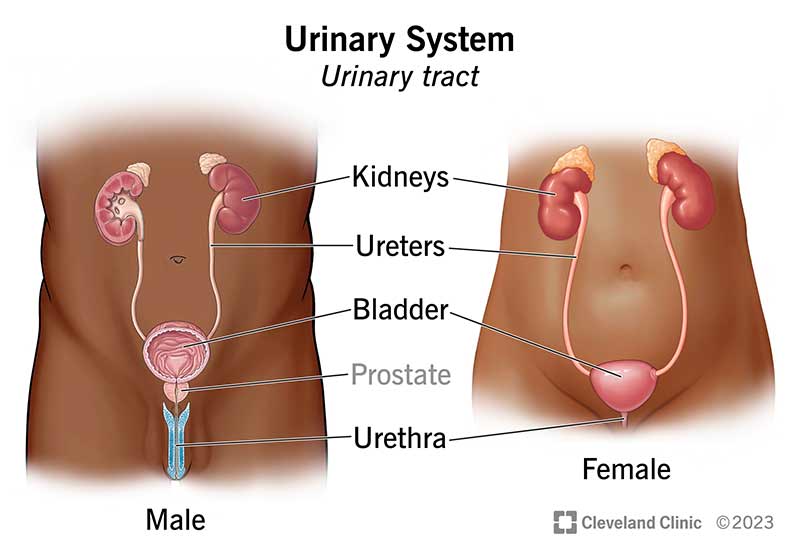
What is the Purpose of the Bladder in the Urinary System?
The urinary system is a remarkable and intricate network of organs responsible for maintaining the body’s fluid and electrolyte balance, as well as eliminating waste products. One of its key components, the bladder, plays a pivotal role in this system by acting as a storage reservoir for urine until it can be efficiently expelled from the body. In this comprehensive article, we will delve into the anatomy, functions, and significance of the bladder in the urinary system.
Anatomy of the Bladder
The bladder is a muscular, hollow organ situated in the pelvis, specifically in the lower abdominal region. Its size, shape, and capacity can vary among individuals, but it typically resembles a pear when empty and expands into a more oval shape as it fills with urine. The bladder is composed of several layers, each serving a specific purpose:
- Inner Lining (Mucosa): The innermost layer of the bladder is lined with a specialized epithelial tissue known as transitional epithelium. This tissue is highly stretchable and impermeable, preventing urine from leaking into surrounding tissues.
- Submucosa: Beneath the mucosal layer lies the submucosa, which contains blood vessels, nerves, and connective tissue that support the bladder’s function.
- Muscular Layer (Detrusor Muscle): The muscular layer, called the detrusor muscle, consists of smooth muscle fibers that contract and relax to facilitate urine storage and expulsion.
- Outer Connective Tissue (Adventitia): The outermost layer, known as the adventitia, anchors the bladder to nearby structures in the pelvis.
Functions of the Bladder
The bladder’s primary function is to store urine produced by the kidneys until it is convenient and appropriate to release it from the body. However, its role extends beyond mere storage; it involves several vital functions:
1. Urine Storage
The bladder acts as a reservoir for urine. As the kidneys continually filter blood to remove waste and excess fluid, urine accumulates in the bladder. The bladder’s elasticity allows it to expand and accommodate varying volumes of urine, typically holding about 500 milliliters when comfortably full.
2. Urine Elimination
When the bladder becomes full, it sends signals to the brain, indicating the need to urinate. This triggers a coordinated process involving the relaxation of the bladder’s detrusor muscle and the contraction of the external urethral sphincter, a ring-like muscle surrounding the urethra. These actions allow for controlled and voluntary release of urine when appropriate.
3. Maintaining Continence
The bladder also plays a crucial role in maintaining continence, which is the ability to control urination. The muscles of the bladder and the external urethral sphincter work together to ensure that urine is retained until a suitable time and place for voiding.
4. Preventing Reflux
The bladder’s transitional epithelium lining prevents urine from flowing back into the ureters, the tubes that connect the kidneys to the bladder. This prevents a condition known as vesicoureteral reflux, which could potentially push urine back into the kidneys, leading to infections and kidney damage.
5. Sensory Function
The bladder has specialized receptors that sense its fullness and relay this information to the brain. This allows individuals to become aware of the need to urinate and make conscious decisions regarding when and where to do so.
Significance in the Urinary System
The bladder’s significance within the urinary system cannot be overstated. It acts as a crucial intermediary between the kidneys, where urine is produced, and the urethra, which allows for urine elimination. Without the bladder’s ability to store and control the release of urine, the body would constantly expel urine as it is produced, making everyday life impractical and uncomfortable.
Conclusion
In summary, the bladder is a vital organ within the urinary system, serving as a reservoir for urine, ensuring controlled elimination, and maintaining continence. Its complex structure and functions allow for the efficient storage and expulsion of waste products from the body, contributing significantly to overall health and comfort. Understanding the role of the bladder in the urinary system underscores its essential place in maintaining the body’s homeostasis and overall well-being.



